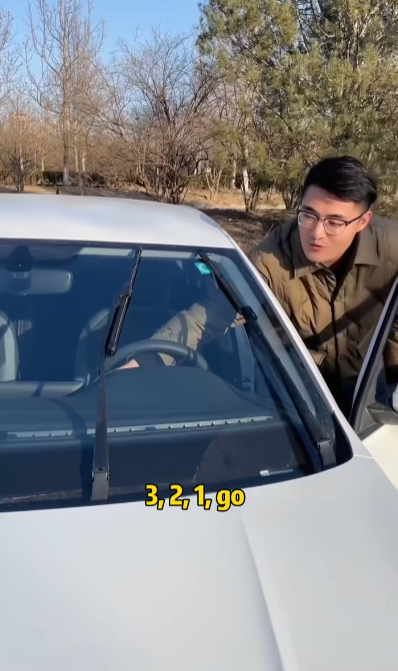
Windshield wipers are often one of the most overlooked parts of a car, but they’re also one of the most essential. When the rain pours or snow falls, your visibility relies almost entirely on the performance of your wiper blades. Unfortunately, many drivers don’t realize there’s a problem with their wipers until it’s too late—like in the middle of a storm. That’s why it’s crucial to check to see if your wipers have this problem before you hit the road.
So, what’s the problem you need to look out for? There are actually several common issues that can cause your windshield wipers to perform poorly or even fail completely. Let’s go through the key signs of wiper trouble and how you can fix or prevent them.
1. Streaking or Smearing
One of the first and most obvious signs of a wiper problem is streaking. If your windshield wipers leave long streaks of water or smear dirt across the glass, your visibility can be dangerously reduced. This usually means the rubber on the blades is either worn out, dirty, or damaged.
Why it happens:
- The rubber is cracked, torn, or hardened due to age or exposure to sunlight.
- Dirt and debris have built up on the wiper blades or windshield.
- Cheap or low-quality blades were installed.
What to do:
- Clean both the windshield and wiper blades with soap and water or rubbing alcohol.
- Replace the blades if cleaning doesn’t solve the issue.
- Consider upgrading to high-quality all-season wiper blades.

2. Chattering or Skipping
If your wipers make a loud chattering sound as they move across the glass or they skip sections entirely, that’s a sign something’s not right. This typically means the blades are not making proper contact with the windshield.
Why it happens:
- The wiper arm has lost tension or is bent.
- The windshield is dirty or has wax or oil residue.
- The rubber edge of the blade is deformed.
What to do:
- Clean the windshield thoroughly, especially if you’ve recently applied wax or rain repellent.
- Inspect the wiper arm for damage or loss of spring tension.
- Replace the wiper blades if the rubber is damaged or warped.
3. Squeaking Noise
A high-pitched squeak every time your wipers move is not just annoying—it’s a sign of friction and poor performance. Even if your blades seem to be cleaning the windshield, that squeak shouldn’t be ignored.
Why it happens:
- The rubber on the blade is too dry or hardened.
- There is not enough water or washer fluid on the windshield.
- The windshield is very dirty or contaminated.
What to do:
- Check your washer fluid and spray some to see if it helps.
- Clean the windshield with a proper glass cleaner.
- If the blades are older than 6–12 months, consider replacing them.
4. Uneven Wiping
If only part of the windshield is being cleared while the rest stays wet or dirty, you may have uneven wiping. This can severely impair your vision while driving in rain or snow.
Why it happens:
- The wiper blade is not making full contact due to warping or damage.
- The wiper arm is loose or bent.
- The blade is too short or incorrectly installed.
What to do:
- Inspect the full length of each wiper blade for damage.
- Make sure the wiper arms are straight and mounted firmly.
- Double-check the blade size and replace with the correct length for your car.

5. Wipers Not Moving Properly
Sometimes the wipers won’t move at all, move slowly, or stop mid-swipe. This could be a mechanical or electrical issue and needs immediate attention.
Why it happens:
- The wiper motor is failing or has failed completely.
- The wiper linkage is broken or disconnected.
- A fuse has blown.
What to do:
- Listen for any motor sounds when you turn the wipers on.
- Check your car’s fuse box for a blown fuse and replace if needed.
- If the motor or linkage is bad, have a mechanic inspect and replace the parts.
6. Rust or Corrosion
Take a close look at the metal parts of your wipers—specifically the arms and the hinges. If you see rust or corrosion, your wipers might not be functioning correctly and could eventually seize up entirely.
Why it happens:
- Exposure to moisture and road salt in winter climates.
- Lack of regular cleaning or maintenance.
What to do:
- Clean the arms with a soft brush and soapy water.
- Apply a light lubricant like WD-40 to joints.
- Replace rusty components if cleaning doesn’t help.
7. Wipers Leaving a Haze
Sometimes, even after wiping, the windshield looks hazy or blurry—especially at night with headlights shining through. This is not just annoying, it’s dangerous.
Why it happens:
- The rubber has degraded and leaves residue.
- The windshield has an oily film.
- Poor-quality blades are in use.
What to do:
- Clean the windshield with a dedicated glass cleaner and microfiber cloth.
- Switch to silicone wiper blades which offer better longevity and clearer wiping.
- Replace worn-out blades immediately.

How Often Should You Replace Your Wipers?
A general rule of thumb is to replace your windshield wiper blades every 6 to 12 months, depending on usage and weather conditions. If you live in an area with frequent rain, snow, or sun exposure, your blades may wear out faster.
Preventive Maintenance Tips
To avoid wiper problems in the future, follow these simple tips:
- Clean your windshield regularly to reduce wear and tear on blades.
- Don’t use wipers on a dry windshield—always spray washer fluid first.
- Lift wipers off the windshield during snowstorms to prevent freezing.
- Inspect wipers monthly for cracks, tears, or damage.
- Use a windshield protector or shade to protect rubber from the sun.
Final Thoughts
Wipers might not seem like a big deal—until the moment you need them most. Whether it’s a surprise rainstorm, snow flurries, or a muddy road splash, clear vision can be the difference between safety and danger. That’s why you should check to see if your wipers have this problem before it’s too late.
Take five minutes today to examine your windshield wipers. A quick inspection and simple replacement can save you from stress, accidents, and unexpected repair bills down the road. Stay safe—and don’t let something as small as a worn-out blade become a big problem!



